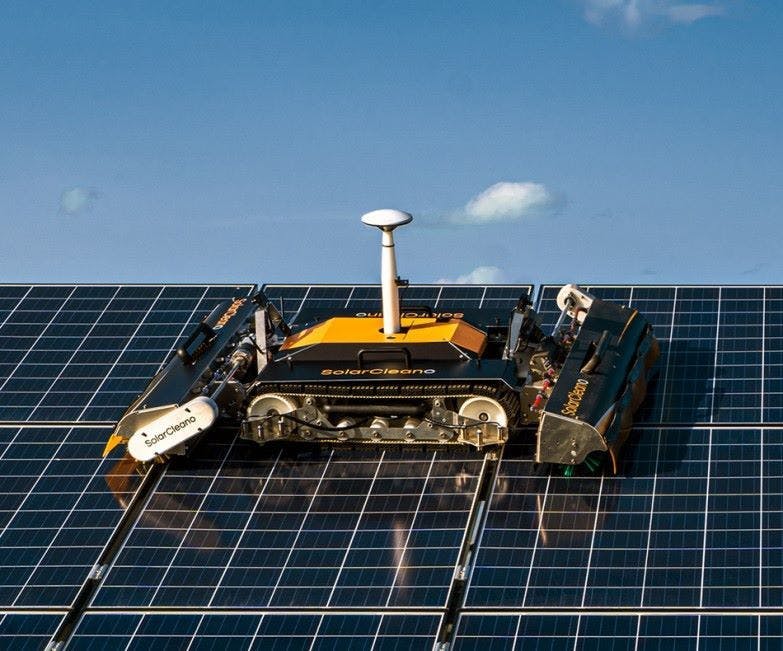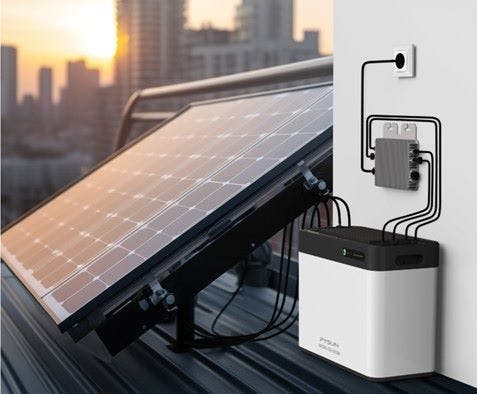Our ability to correct the damage done to our environment has never been better. Some recent advances show how far we’ve progressed toward a safe future by building the foundations of a sustainable and green energy economy.
Artificial intelligence (AI), which grew out of process control, plays an important role. However, automation engineers must make sure AI isn’t allowed to do all it can, but is restricted to what it should do. When using AI, we must remember it has no conscious, emotions, self-awareness or morals. In other words, it has no "heart,” only the ability to do what it’s instructed to do.
Get your subscription to Control's tri-weekly newsletter.
You can think of AI as a tool, just like a knife, which a chef can use to make great chicken paprikash, but a terrorist can use to cause havoc. I mention this because AI can make us safer, freer and more human, but only if it’s properly controlled.
Let’s look at some lesser-known advances already achieved in our energy economy.
Solar robots
Solar energy is the market that drives technological progress, and green energy installations benefit from these market forces because these sources are the most profitable sources of electricity. Construction of fossil or nuclear power plants take about a decade, while solar farms can be built in a year or two. Once built, the electricity they produce is free and causes no carbon emissions. Also, solar farms can be built by AI controlled robots, halving the cost of solar park construction.
The robots that perform solar construction can work 24/7, and install hundreds of 60- to 80-lb panels each day. They can work twice as fast and for half the cost of traditional methods. Fully automating this 24-hour operation isn’t easy. It requires sophisticated sensors and control algorithms, which only our profession can provide. These calculations and instruments arrange solar panels in neat rows, even on difficult or uneven terrain, and adjust them for maximum efficiency, while performing in 100° F temperatures or even in darkness.
The argument that jobs will be lost to robots reminds me of discussions during the switch from horse-drawn carts to automobiles. Granted, many coachman jobs were lost during the transition, but at the same time, cities like Detroit were built, and millions of gas stations and refineries were constructed, which created 10 times the initial jobs lost. The same will happen by robotizing many processes as we convert to green energy. It’s estimated that solar employment in the U.S. will double by 2030, and reach more than half a million jobs by that time.
Transportation advances
While about 40 million, lithium-fueled electric vehicles (EV) are presently on the roads, future cars will eventually be hydrogen-fueled vehicles (HFV). Today, there are only about 75,000 HFVs operating, including 14,000 in California. Let’s compare the two designs.
The lithium battery packs in most EVs weigh about 1,000 pounds (the weight of more than five passengers). They hold about 50 KWh, which is enough for a range of about 200-300 miles. For that distance, the electricity used costs $10 to $15, taking at least 30 minutes to recharge. These cars are also (falsely) promoted as "carbon-free," when in fact, producing lithium and conventional electricity generation to recharge them requires burning fossil fuels. Also, their performance in cold-weather is poor. In hot weather or when overcharged, they heat up and become flammable, possibly causing fires. For example, a recent lithium battery fire destroyed 900 cars, and caused a great amount of damage at a parking garage building in Seoul, South Korea.
As the limitations of EVs become known, use of HFVs increases, particularly in Asia. Nearly 100,000 HFVs are on the roads there, with hydrogen stored in pressurized tanks and electric motors driven by fuel cells. I consider this design a temporary one that will change because hydrogen can be stored more safely under high-pressure or in cryogenic conditions. I believe these storage tanks will be replaced by magnesium-based, solid-state blocks that can store and transport hydrogen at ambient pressures and temperatures, eliminating the risks associated with high-pressure tank leaks or explosions. Similarly, I believe fully evolved designs will replace fuel cells and electric motors with internal combustion engines that directly burn hydrogen fuel. Such designs aren’t on the market yet, but they are being developed.
Building-industry advances
Components of a balcony solar panel include:
- Mounting of balcony solar panels
- High rise building with solar panels operating split heat pumps
These units also feature wireless connections to computers, allowing owners to check how much electricity is generated, stored or taken from battery storage at any time. About 500,000 such balcony units have been installed in Germany, which added 6 GW to the nation’s solar electricity capacity (further reducing the need to import natural gas from Russia).
Solar panels can also be placed on any building surface, and not only serve the energy needs of the building, but also decorate it (Figure 3).
About the Author
Béla Lipták
Columnist and Control Consultant
Béla Lipták is an automation and safety consultant and editor of the Instrument and Automation Engineers’ Handbook (IAEH).

Leaders relevant to this article:




